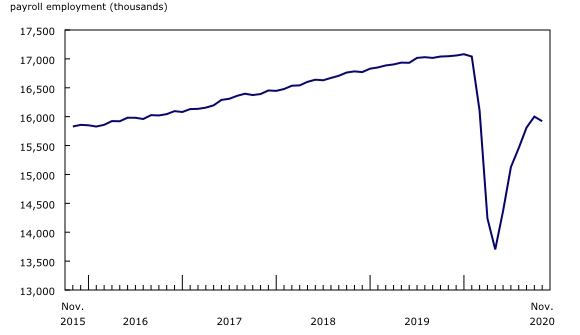Ontario extends off-peak electricity rates
The Ontario government is extending electricity rate relief for families, small businesses and farms to support those spending more time at home in response to the provincial Stay-at-Home Order. The government will continue to hold electricity prices to the off-peak rate of 8.5 cents per kilowatt-hour until February 9, 2021. This lower rate is available 24 hours per day, seven days a week for Time-Of-Use and tiered customers.
The off-peak rate came into effect January 1, 2021 for a 28-day period, providing families, farms and small businesses with immediate electricity rate relief. The government is now extending this rate relief for an additional 12 days, for a total of 40 days. The off-peak price will continue to be automatically applied to bills of all residential, small business, and farm customers who pay regulated rates set by the Ontario Energy Board and get a bill from a utility.
Businesses should also review the COVID-19 Energy Assistance Program for Small Business (CEAP-SB), which you can apply to through your utility provider. This program offers credits for electricity and natural gas expenses which small businesses affected by the pandemic can claim.
Canada Summer Jobs application period extended
The employer application period for the 2021 Canada Summer Jobs program is being extended until February 3, 2021, to allow more employers to apply for funding to hire young people. Not-for-profit organizations and private and public sector employers who have not already applied for funding are encouraged to do so today.
Private-sector small businesses with 50 or fewer employees and all public sector employers can receive funding for up to 75% of the provincial or territorial minimum hourly wage. Not-for-profit employers will continue to receive funding for up to 100% of the provincial or territorial minimum hourly wage and mandatory employment-related costs.
Employers interested in applying are invited to submit applications that complement this year’s national priorities:
- organizations that provide services to or intend to hire youth who self-identify as being part of under-represented groups or as having additional barriers to entering or staying in the labour market;
- opportunities offered by organizations that provide services to persons with disabilities or intend to hire youth with disabilities;
- opportunities for youth in rural areas, remote communities or official language minority communities;
- opportunities offered by organizations that focus on protecting and conserving the environment; and
- opportunities offered by employers impacted by COVID-19, in particular small businesses, in recognition of their contribution to the creation of jobs.
For more information on how to apply for funding, please visit Canada.ca/Canada-summer-jobs. Applicants who are approved for funding will be able to hire youth as early as April 2021.
Niagara-on-the-Lake approves 2021 budget
PDF link
Niagara-on-the-Lake approved the town’s 2021 budget at a council meeting last night. An initial proposed 7.68% levy increase was brought down to 2.12%. For the average homeowner with an assessment of $533,482, this is an increase of approximately $29.67/annually on their tax bill. A storm levy of $456,998 was also approved, which is a 4.5% increase from 2020. As a result, residents who live in an urban area will see an extra $3.25/annually on their tax bill, in addition to the $29.67/annually as stated above.
New visitor restrictions at Niagara Health take effect
Visitor restrictions at Niagara Health sites announced on January 26th took effect today. Visitors will only be permitted if the visitor is supporting a patient in exceptional circumstances, or has been designated as an Essential Care Partner (ECP) for a patient. Support persons may accompany outpatients and visit with inpatients to provide support in exceptional circumstances. Exceptions would also be made for patients coming to our Emergency Departments/Urgent Care Centres. Among the factors the care team may consider are: supporting patients in life altering circumstances, experiencing a mental health crisis, are at end of life, or are vulnerable (cognitive, developmentally delayed, language impairment, physical challenges). In the case of outpatients and inpatients, support persons should contact the care team in advance to discuss the process.
OPENN reports disturbing increase in opioid overdoses in Niagara
The Overdose Prevention and Education Network of Niagara (OPENN) has called attention to a 25.3% increase in calls to Niagara Emergency Medical Services (EMS) for possible overdoses between 2019 and 2020, according to Niagara Region Public Health. Mental health and addictions resources can be accessed at:
- Mental Health and Addictions Access Line: 1-866-550-5205 or accesslineniagara.com
- 211 Call Centre: Dial 211 or incommunities.ca/en/211-niagara/211-ontario/
Naloxone kits, used to treat overdoses, are available from many pharmacies or Positive Living Niagara at 905-984-8684.
Payroll employment declines in November
Payroll employment fell 79,500 (-0.5%) in November—the first decline since May. The total number of employees receiving pay or benefits from their employer was down 1.1 million (-6.6%) compared with February.
As adjustments to tighter public health measures continued in November, payroll employment fell in four provinces: Manitoba (-1.7%; -9,700), Quebec (-1.2%; -42,900), Alberta (-0.7%; -12,500) and Ontario (-0.4%; -25,300), reflecting the impact of these measures.
The decline in payroll employment in November was entirely attributable to hourly paid employees (-1.0%; -86,600). Hourly paid employees tend to earn significantly less than salaried employees. In February 2020, for example, salaried employees earned an average of $1,410 per week, while hourly paid employees earned an average of $800 per week.
In November, the number of hourly paid employees was 8.7% below its pre-COVID level, compared with 3.7% below the pre-COVID level for salaried employees. In May, the number of hourly paid employees was 25.5% below its pre-COVID level, compared with 7.8% below the pre-COVID level for salaried employees.
In November, payroll employment fell in the services-producing sector (-0.4%; -45,500), the first decline for this sector since May. Losses were largely concentrated in accommodation and food services (-48,200). Most of the monthly decline was in full-service restaurants and limited-service eating places (-37,400), consistent with restrictions on indoor and outdoor dining in several provinces. Smaller declines were observed in several other sectors, including arts, entertainment and recreation (-8,800) and transportation and warehousing (-6,700). Employment in the goods-producing sector was little changed.
Reading recommendations
Why experts argue governments must take risks — besides pipelines — to restart economic growth
Don Pittis, CBC News
It is very likely that the environmentally inclined economist Mariana Mazzucato, whose new book, Mission Economy, hits the shelves today in Britain, would have a certain sympathy for Alberta Premier Jason Kenney’s failed multi-billion-dollar bet on the Keystone XL pipeline. At least in principle.
Kenney has not been forthcoming on the details of the estimated $7.5 billion in Alberta taxpayer money in direct investment and loan guarantees that he contributed to the project. But as Mazzucato’s research has shown, taking risks that no one else will is a crucial government investment strategy for building a successful economy. Governments, she argues, must pick winners.
But this week, there are clear indicators the bets are changing.
Teen suicide prevention during COVID-19: How parents and kids can have honest and safe conversations
Marie-Claude Geoffroy, Anthony Gifuni, The Conversation
As researchers concerned with suicide prevention in youth, we sometimes hear people express sentiments like these about young people in the pandemic. But socialization is an important part of growing up. As much as COVID-19 has affected adults, it may affect children and teens even more.
How to explain to a young child why he cannot play with other children? How can children learn to read facial expressions when people wear masks? How to see friends, how to date and form new relationships with social distancing and schools mostly online? Such experiences are so vital to teenage and young adult development.
This new angst is now added to the plethora of mental health issues already affecting young people. Though experts suspect there has been an uptick in suicide in the pandemic, 2020 statistics are not in yet.
Niagara COVID status tracker
Niagara’s most up-to-date COVID statistics, measured against the targets for the various stages of the Ontario COVID-19 Response Framework, are presented below. This does not predict government policy, but is offered to give you an idea of where Niagara is situated and how likely a relaxation (or further restrictions) may be. These data are drawn daily from Niagara Region. The Grey-Lockdown level does not have its own metrics, but is triggered when the COVID-specific measurements in a Red-Control region have continued to deteriorate.
Note that the Provincewide Shutdown is not the same as the Grey-Lockdown level listed in the Ontario COVID-19 Response Framework, which has been suspended for the duration of the shutdown. Additional restrictions for businesses apply during the Shutdown. Businesses should not use the Response Framework as a guide during this time, but should instead refer to the Shutdown guidelines.
| December 18 | December 25 | January 1 | January 8 | January 15 | January 22 | January 29 | |
|---|---|---|---|---|---|---|---|
| Reproductive number | 1.4 | 1.8 | 1.4 | 1.1 | 1.0 | 0.7 | 0.9 |
| New cases per 100,000 | 101.2 | 267.3 | 469.8 | 575.8 | 507.1 | 295.5 | 250.6 |
| New cases per day (not including outbreaks) | 60.7 | 178.7 | 311.7 | 376.9 | 325.4 | 182.7 | 145.7 |
| Percent of hospital beds occupied | 97% | 95.2% | 98.2% | 103.2% | 104.5% | 103.6% | 106% |
| Percent of intensive care beds occupied | 78.8% | 77.3% | 87.9% | 87.9% | 90.9% | 89.4% | 93.9% |
| Percentage of positive tests | 6.1% | 15.6% | 28.1% | 28.6% | 26.6% | 21.2% | 16.2% |
Definitions:
- Weekly Incidence Rate: the number of new COVID-19 cases per 100,000 people per week
- Percent Positivity: the number of positive COVID-19 tests as a percentage of all COVID-19 tests performed
- Rt: the reproductive rate, or the number of people infected by each case of the virus




